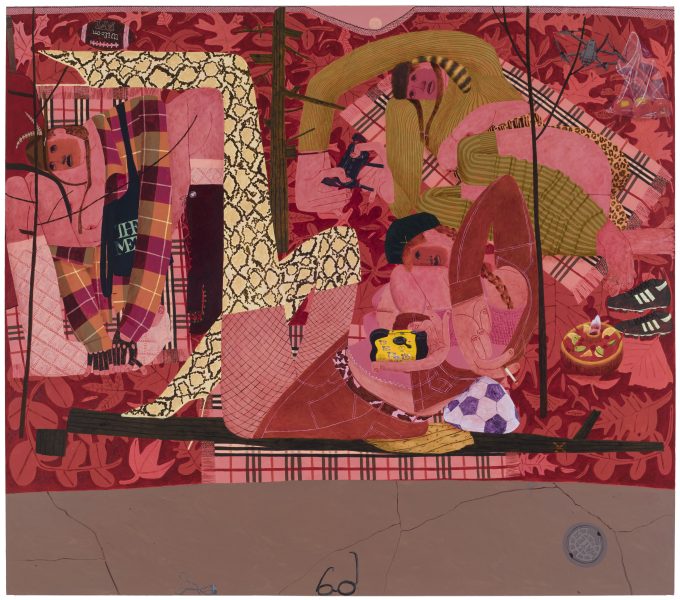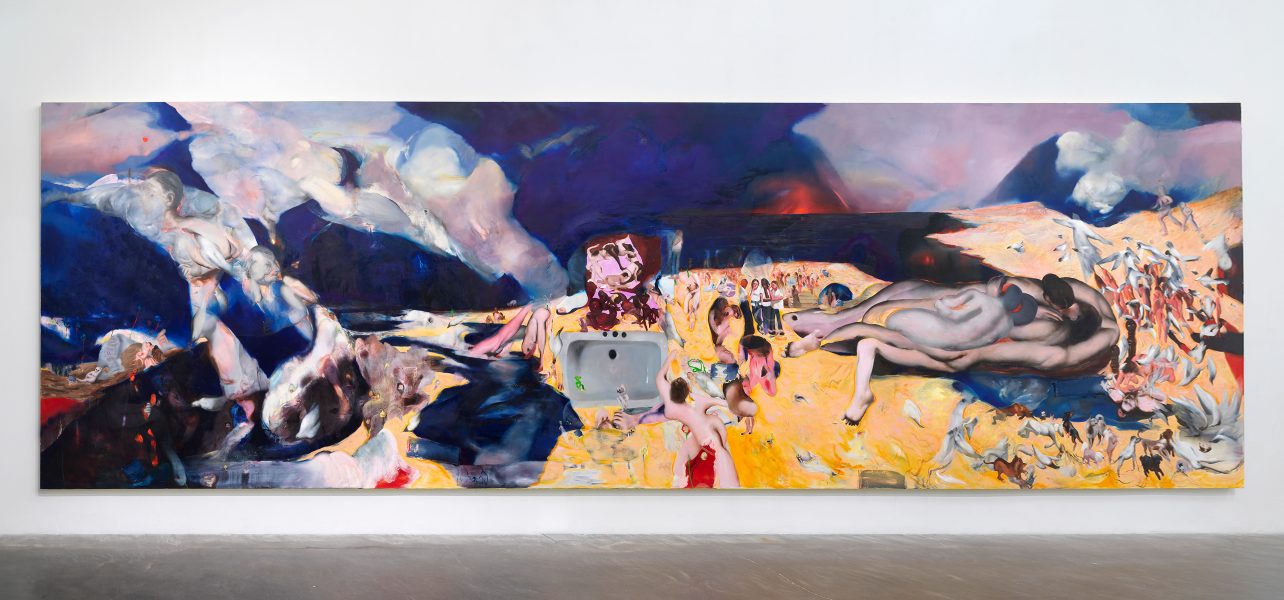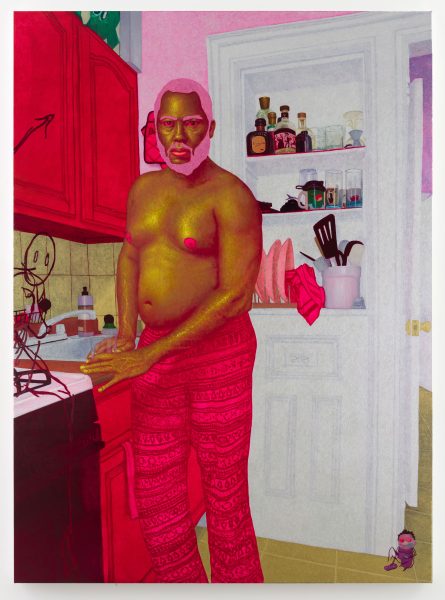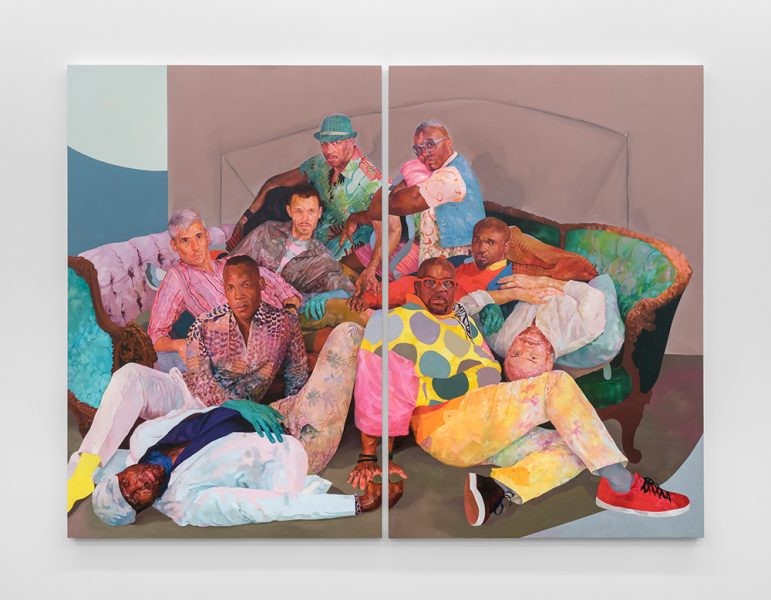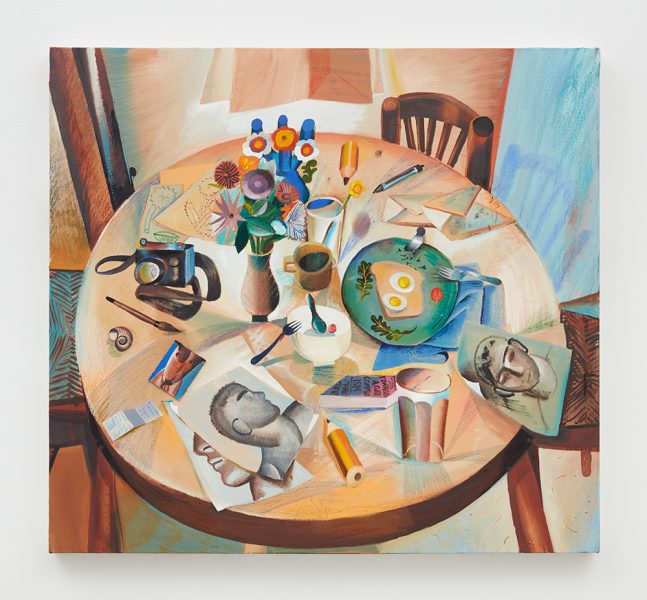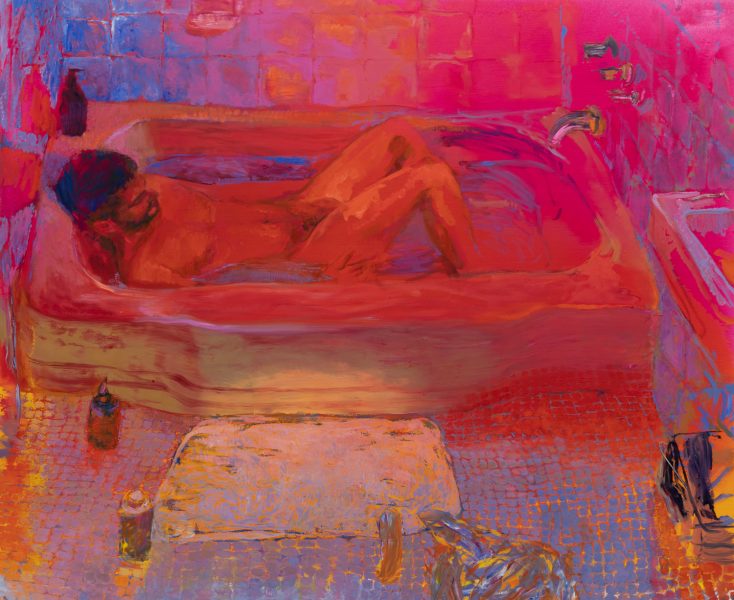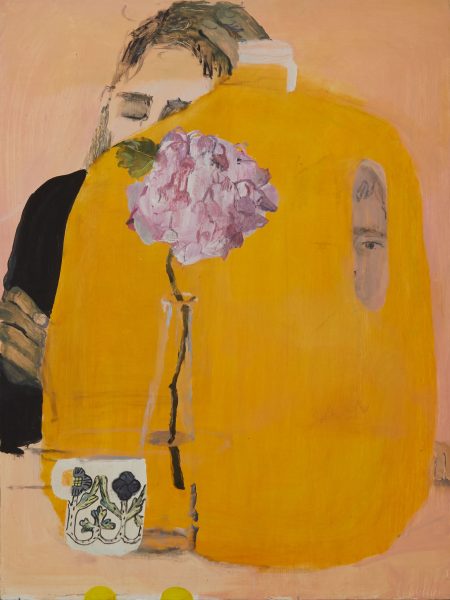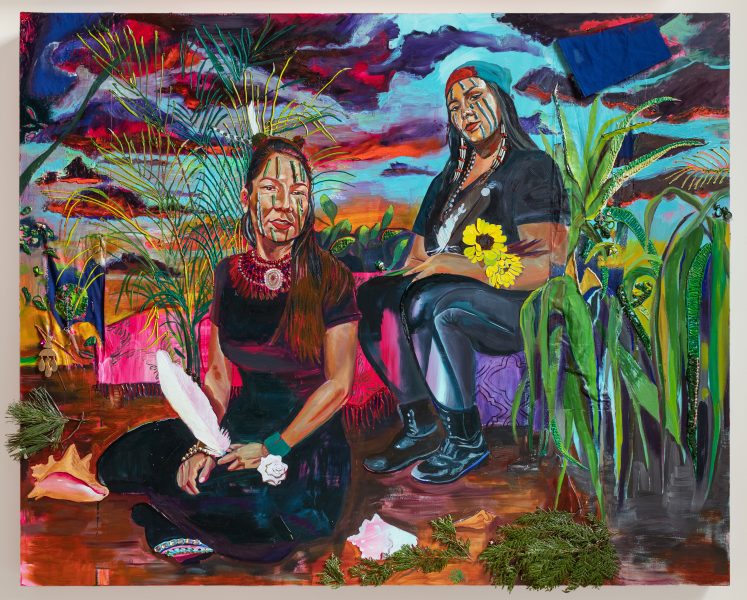(Boston, MA—February 8, 2022) The Institute of Contemporary Art/Boston (ICA) presents A Place for Me: Figurative Painting Now, an exhibition that celebrates a new generation of artists at the vanguard of contemporary painting. David Antonio Cruz, Louis Fratino, Doron Langberg, Aubrey Levinthal, Gisela McDaniel, Arcmanoro Niles, Celeste Rapone, and Ambera Wellmann are leading figurative painting’s recent revival by depicting what they love—their friends, lovers, and family; studio spaces and homes; and the scenes that make up their everyday. Organized by Ruth Erickson, Mannion Family Curator, with Anni Pullagura, Curatorial Assistant, A Place for Me: Figurative Painting Now will be on view March 31 through September 5, 2022, concurrent with Bárbara Wagner & Benjamin de Burca: Swinguerra.
Colorful, surprising, and full of life, A Place for Me is a testament to the vitality of contemporary figurative art, reflecting a multitude of styles and approaches to painting through a cross-section of contemporary painting today. Evoking intimacy, community, and the personal in the power to represent oneself in painting, these eight artists claim space for Black, Indigenous, brown, and queer life. Through their work, they consider the politics of seeing and being seen and how painting might register care, tenderness, empathy, and resilience. The exhibition features nearly 40 works arranged by artist.
“Portraiture has historically been a way that people in positions of power represent and memorialize their authority and positions within society,” said Jill Medvedow the ICA’s Ellen Matilda Poss Director. “A Place for Me presents an exuberant selection of paintings by an emerging generation of queer, female, and BIPOC artists and a multiplicity of perspectives on art and identity.”
“Over the last five to 10 years, there has been a remarkable reemergence of figurative painting with a new attention on who is depicted and who is being seen, and a desire through figurative painting to connect with contemporary experience,” said Erickson. “Shedding light on this, A Place for Me considers questions of identity and community and the diverse ways artists are addressing and exploring these themes through painting.”
About the Artists
David Antonio Cruz
David Antonio Cruz (b. 1974 in Philadelphia) is a Boston-based painter and mixed media performance artist who centers the experiences and agency of the Black, brown, and queer sitters who feature in his work. Drawn from life studies made of friends and acquaintances presented in richly varied compositions and palettes, Cruz’s paintings honor what he calls “the celebration of life, of being. Living in the moment and full of life.”
Louis Fratino
Louis Fratino (b. 1993 in Annapolis, MD) is a New York-based artist whose work fuses personal memories with art historical references to explore queerness in the gestures of everyday life. The subject matter of his paintings, sculptures, and prints ranges from nude figures to landscapes and still-lifes, through which he searches to represent visually the emotions and expressions of what he has called the “mysticism around painting, where you can manifest something through it, [whether] it’s something as simple as doing the dishes, or being in love with someone, or feeling close to your family.”
Doron Langberg
Doron Langberg (b. 1985 in Yokneam Moshava, Israel) is a New York-based painter invested in the relationship between queer lived experiences and emotional states that are universal across social categories. Touch, physicality, and movement are significant areas of focus in his vivid paintings, which include portraits of family and friends in his social circle. “I see my work as an aspirational space where queer experiences can embody more than just what they depict,” explains Langberg. “So, my paintings are both a ‘real’ reflection of my everyday experiences, and an alternate reality where queerness is allowed to be expansive and generative.”
Aubrey Levinthal
Aubrey Levinthal (b. 1986 in Philadelphia) is a Philadelphia-based painter whose work attends to the quotidian register of experience, what she calls the “uncanny in our everyday lives.” Her abstract figurative portraits are charged with an almost melancholic atmosphere, rendered in muted yet vibrant colors and a close attention to detail, evoking less a portrait of her subjects – which range from herself to those in her familial and social circles – than of their emotional states. As Levinthal explains, “I hope my work is a real, tender accounting of my particular visual life. The paintings can be inventive and distorted, as I often work from memory and through process, but I want them to carry resonance of my experience, which happens to be as a painter, woman, and mother.”
Gisela McDaniel
Gisela McDaniel (b. 1995 in Bellevue, NE) is a Detroit-based diasporic, Indigenous CHamoru artist. Her work, which engages primarily with processes of healing for womxn and non-binary people of color who have survived personal and historical trauma, is composed as mixed-media assemblages based in oil painting and found objects (often donated by her sitters) and accompanied by audio recordings she makes with her sitters during the painting process. “As survivors, we deal with the aftermath of events that remain with us for years and even lifetimes,” reflects the artist. “By recording the stories of these [womxn], I ensure that history hears their voices and recognizes them as having saved themselves.”
Arcmanoro Niles
Arcmanoro Niles (b. 1989 in Washington, D.C.) is a New York-based artist whose brightly hued paintings offer views of daily life, drawn from his own personal life and featuring characters as “seekers” who reflect subliminal urges and desires. Often incorporating reflective paints and glitter to enliven the surface of his canvases and those depicted, Niles’s intensely rendered compositions feature himself, friends, and family. “A lot of it is pretty intuitive, especially when it comes to the color, the construction of the composition, and how I want it to feel,” shares the artist. “But I think that, at the end of the day, I am a painter who is interested in color and stories that talk about who we are. Little moments that give us a glimpse into what life feels like.”
Celeste Rapone
Celeste Rapone (b. 1985 in Glen Ridge, NJ) is a Chicago-based abstract figurative painter known for illustrations of mostly women subjects—usually the artist herself—in outlandish, impossible, and even humorous compositions. Her style exceeds the traditional expectations and perspectival grounds of her canvas, drawing attention to the dynamic movement, colors, and details layered into her images meant to evoke a range of feelings from anxiety and restriction to vulnerable freedom and potential. “There’s something about the idea of the women contained, occupying these impossible positions anatomically, but also in terms of expectations, ambition, defeat and self-awareness,” shares the artist. “But even if there are sub-narratives occurring in [my] paintings, inherently they are all about trying. That notion of effort or expectation that goes into trying, which tries to counter failure. But failure is always one aspect of a larger cycle, in life and in painting.”
Ambera Wellmann
Ambera Wellmann (b. 1982 in Lunenburg, Nova Scotia, Canada), a New York-based artist, explores themes of absurdity, familiarity, and uncertain intimacy in her paintings. Portraying human and, on occasion, animal bodies, commingled into numberless, genderless figures, Wellman’s paintings forgo a dominant, heteronormative Western figurative canon in favor of a distinctly feminist and queered perspective. Interested in visualizing the fluidity of gender and identity expression, Wellmann notes, “There’s this urge sometimes when you’re painting to answer things. I try to avoid that, actually. A painting should end with a question; it helps lead you to the next one.”
About the ICA
Since its founding in 1936, the ICA has shared the pleasures of reflection, inspiration, imagination, and provocation that contemporary art offers with its audiences. A museum at the intersection of contemporary art and civic life, the ICA has advanced a bold vision for amplifying the artist’s voice and expanding the museum’s role as educator, incubator, and convener. Its exhibitions, performances, and educational programs provide access to the breadth and diversity of contemporary art, artists, and the creative process, inviting audiences of all ages and backgrounds to participate in the excitement of new art and ideas. The ICA is located at 25 Harbor Shore Drive, Boston, MA, 02210. The Watershed is located at 256 Marginal Street, East Boston, MA 02128. For more information, call 617-478-3100 or visit our website at icaboston.org. Follow the ICA on Facebook, Twitter, and Instagram.
Credit
Support for A Place for Me: Figurative Painting Now is generously provided by Katie and Paul Buttenwieser, Ellen Poss, Stephen Baker and Gavin Kennedy, Patrick Planeta and Santiago Varela, and an anonymous donor.
